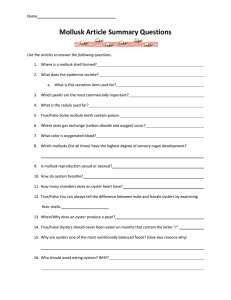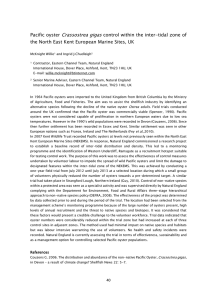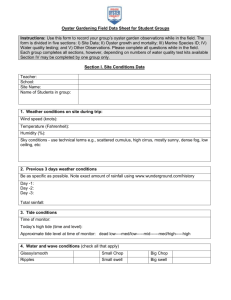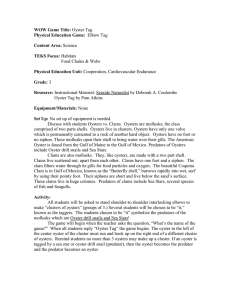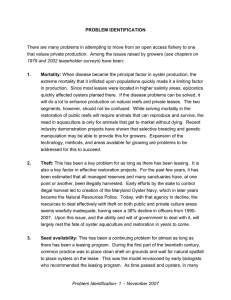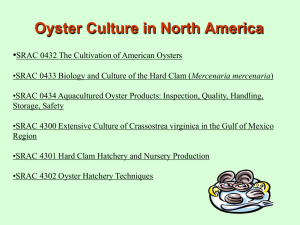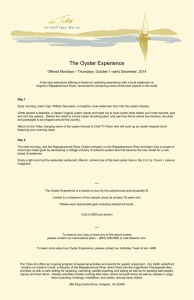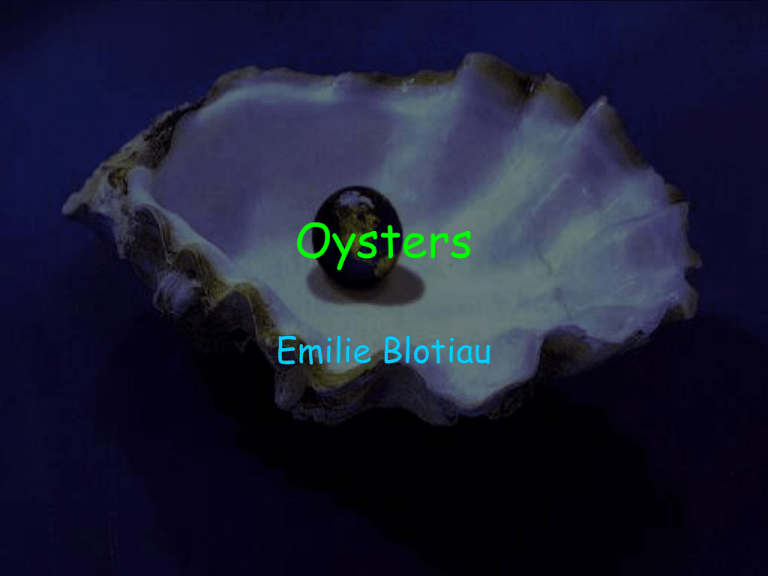
Oysters
Emilie Blotiau
Scientific Name
• Oysters
scientific
name is
Crassostrea
madrasensis
Physical Characteristics
• Have a rough
outer shell.
• Inner shell is
smooth from the
erosion of sand.
Anatomy
• Oysters have gills like fish
that filter the oxygen out of
the water.
• They are filter feeders, and
use beating cilia to catch
food.
• They have a small three
chambered heart that lies
under the adductor muscle.
• The mantle contains many
small blood vessels which
filter for oxygen in the
water.
Habitat
• Live mostly in the
intertidal zone.
• Live between rocks and
attached to hard
substrates.
• No preference to ocean
temperature however
they feed best at 50
degrees.
• Reside mostly in
brackish water.
Oysters Diet
• Oysters are filter
feeders.
• Plankton and other
particles are caught by
the beating cilia, and
get stuck in the mucus
membrane of the gills.
– The gills transport the
food to the stomach.
Reproduction
• One cannot determine if
an oyster is male or
female by their shells.
– they are one sex or the
other (not
hermaphroditic).
– Can change sex once or
more during their lifetime.
– It is almost impossible to
tell the age of an oyster.
Interesting Facts
• Some types of oysters can produce
pearls inside their shells.
• They can grow to be about a foot long.
• Oysters have blood and veins, their
blood is colorless.
• It is extremely hard to open a live oyster
shell. You must use a knife.
Pictures
Find the oyster in the pictures!


